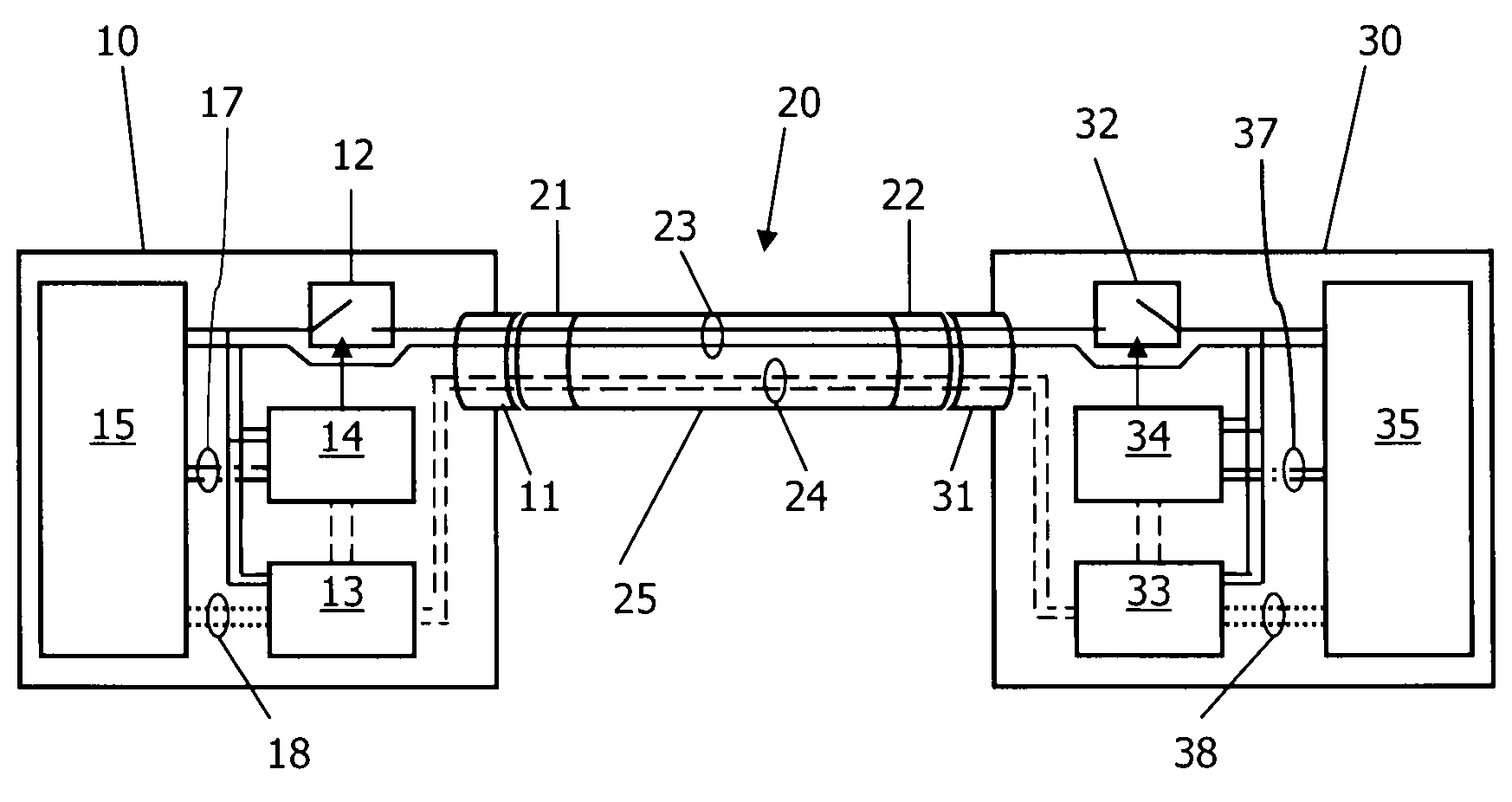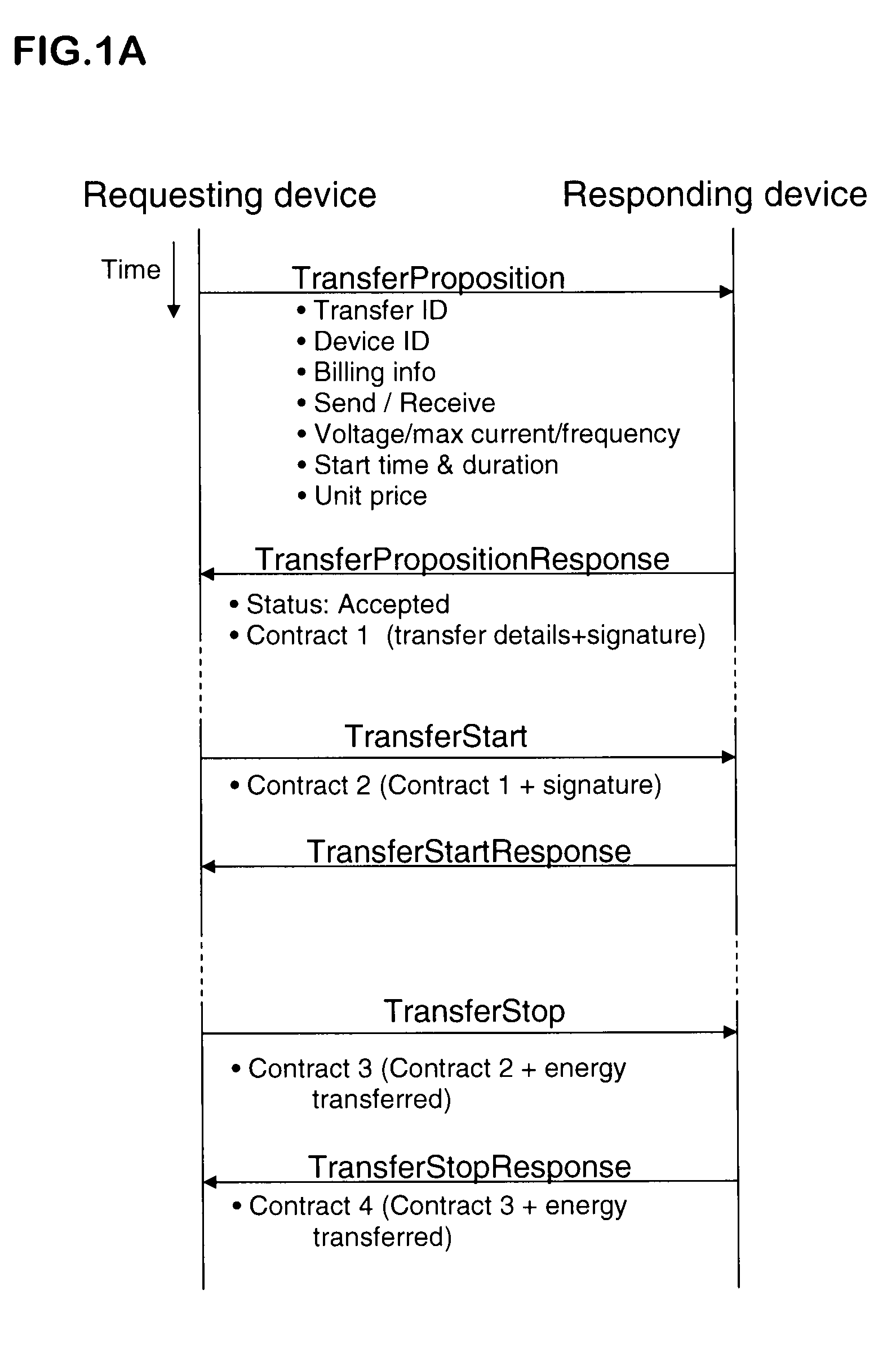Peer-to-peer transaction-based power supply methods and systems
a power supply and transaction technology, applied in the direction of data switching details, position/direction control, exchanging data chargers, etc., to achieve the effect of facilitating energy exchange, robust and scalable, and facilitating energy exchang
- Summary
- Abstract
- Description
- Claims
- Application Information
AI Technical Summary
Benefits of technology
Problems solved by technology
Method used
Image
Examples
example 1
Energy Transfer Between Two Mobile Appliances
[0125]Louise, John and William are in a restaurant when John's mobile telephone beeps to indicate that its battery is running low on power. John could use a PI-link according to the present invention to obtain power from Louise's mobile telephone but Louise is reluctant to agree to this because her own telephone is not fully-charged. William has a mobile music player that he does not intend to use any more that day and there is some electrical energy left in its battery. William agrees to transfer the electrical energy from his mobile music player to John's mobile telephone at no charge. Both John's mobile phone and William's portable music player use direct current at 5 volts. William and John plug their devices into a PI-link and the devices negotiate a power transfer at 5 volts dc. After a time, John's phone has enough energy in store to remain active that evening.
example 2
A Single Energy Transfer Between a Vehicle and a Mobile Appliance
[0126]Louise travels home from the restaurant in a taxi which constitutes a PI-device having a storage aspect (e.g. using the car battery or other storage cells) and / or having a producer aspect (e.g. using solar panels provide on the taxi roof). The tariff for obtaining electrical energy from the taxi (acting as a supplier device) is indicated on a poster in the taxi, together with the electrical specification(s) of the signal(s) that can be supplied—the price is quite high. Louise sees that the taxi's PI device can provide energy at 5 volts dc, which is the electrical specification required by her mobile telephone. Remembering that her mobile telephone needs charging, and knowing that the amount of energy required is relatively small, Louise decides to charge the battery in her mobile telephone and uses a PI-link to connect her telephone to a PI-socket in the taxi. Louise's mobile telephone negotiates with the PI-devi...
example 3
Multiple Transfers within a Vehicle
[0129]William takes a trip on an airplane, taking his laptop computer with him. The computer battery is fully charged. Knowing that the airline has a PI-system and charges customers high prices for energy, William decides to sell the energy in his laptop's battery to other passengers on the plane, with the negotiation and power-transfer taking place over the airplane's PI-system. There is a user-interface either on the PI-link connecting William's laptop computer to a PI-socket in the airplane or on William's laptop. William uses this interface in order to control the PI-link / laptop to sell all the electrical energy in his laptop's battery, without requiring further intervention on his part to validate individual transactions. William's laptop battery is configured to supply 10.8 volts dc. A general offer of energy is made to other passengers in the aeroplane, via the PI-system, negotiations are held with responding devices and agreed transfers are...
PUM
 Login to View More
Login to View More Abstract
Description
Claims
Application Information
 Login to View More
Login to View More - R&D
- Intellectual Property
- Life Sciences
- Materials
- Tech Scout
- Unparalleled Data Quality
- Higher Quality Content
- 60% Fewer Hallucinations
Browse by: Latest US Patents, China's latest patents, Technical Efficacy Thesaurus, Application Domain, Technology Topic, Popular Technical Reports.
© 2025 PatSnap. All rights reserved.Legal|Privacy policy|Modern Slavery Act Transparency Statement|Sitemap|About US| Contact US: help@patsnap.com



